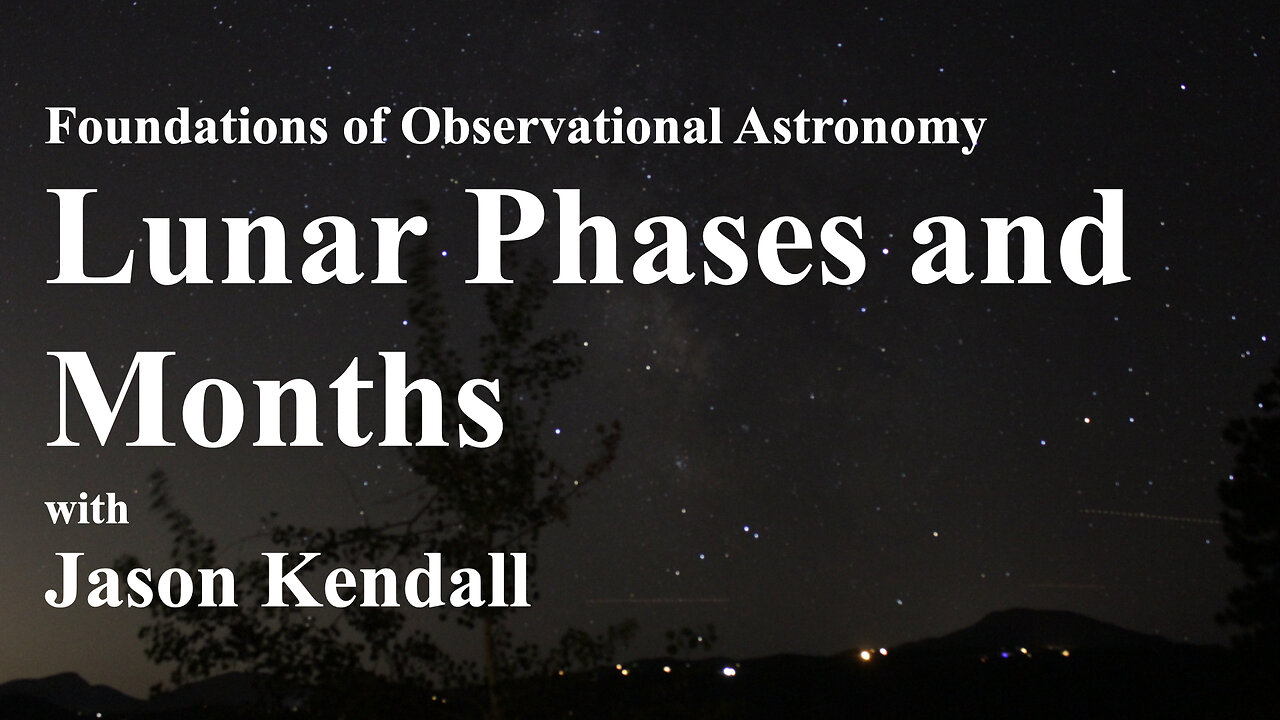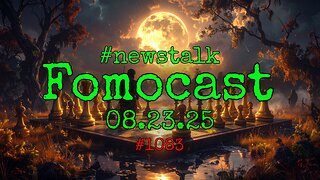Premium Only Content

Understanding the Moon: Tidal Locking and Lunar Phases
Have you ever observed that we consistently see only one side of the moon? This phenomenon occurs because the moon’s rotational period is synchronized with its period of revolution around the Earth. This synchronization, known as tidal locking, ensures that the moon rotates at the same rate at which it orbits, thereby always presenting the same face to our planet. Let us explore the various phases of the moon, which include the waxing crescent, first quarter, waxing gibbous, full moon, waning gibbous, third quarter, and waning crescent, ultimately culminating in the new moon. The new moon is a phase that occurs when the moon is positioned in alignment with the sun, rendering it invisible from the perspective of Earth. The alignment of the moon’s rotation and orbit is responsible for these distinct phases. An illustrative diagram depicting the moon and Earth demonstrates that, were the moon not to rotate, we would witness different facets of its surface. However, due to the effect of tidal locking, the same side consistently faces the Earth as the moon completes its orbit. To comprehend lunar cycles, it is essential to differentiate between two types of months: the sidereal month, which lasts approximately 27.32 days and is based on the moon’s position relative to distant stars, and the synodic month, which spans about 29.53 days and measures the time from one new moon to the next. The synodic month is particularly relevant for observing the moon’s phases. Additional lunar phenomena include supermoons and micromoons, which are determined by the moon’s elliptical orbit. A supermoon occurs when the moon is at its closest proximity to the Earth, resulting in an appearance that is slightly larger than usual, whereas a micromoon is observed when the moon is at its farthest point. There are other classifications of lunar months, such as the tropical month (measuring from equinox to equinox), the anomalistic month (from perigee to perigee), and the draconic month (from node to node). Each of these measurements corresponds to different aspects of the moon’s orbital path. Contrary to a common misconception, the phases of the moon are not produced by the Earth’s shadow; rather, they are the result of the spatial relationships among the Earth, moon, and sun. A comprehensive understanding of these lunar dynamics elucidates the moon’s consistent appearance and the fascinating variations observed throughout each month.
-
 58:59
58:59
MattMorseTV
4 hours ago $0.95 earned🔴Trump just BROKE Newsom.🔴
42.3K45 -
 18:14
18:14
Her Patriot Voice
5 hours agoWho Is WORSE for NYC: Trump Girl or Socialist?
24.2K23 -
 3:39:42
3:39:42
SavageJayGatsby
4 hours agoSpicy Saturday with Mally! | Road to 100 | $300 Weekly Goal for Spicy Bites!
24.6K1 -
 LIVE
LIVE
FomoTV
6 hours ago🚨 Swamp Theater: FBI Raids Bolton 🕵 Still NO Epstein Files, Trump's Troops & the Red Heifer Hoax 🐂 | Fomocast 08.23.25
76 watching -
 6:04:40
6:04:40
Akademiks
9 hours agoRoc Nation & Meg Thee Stallion did a 7 HOUR Deposition with me. Drake Secret Kid Finally Revealed.
45.1K1 -
 24:19
24:19
Stephen Gardner
5 hours ago🚨BREAKING: FBI Raid of John Bolton’s House Reveals THIS!
47.4K122 -
 8:31
8:31
MattMorseTV
7 hours ago $1.10 earnedTexas just did the IMPOSSIBLE.
46.2K59 -
 24:39
24:39
MYLUNCHBREAK CHANNEL PAGE
1 day agoInterdimensional Beings at Borobudur
52.2K27 -
 12:42
12:42
Scammer Payback
1 day agoCalling Scammers who were Raided
24.2K11 -
 23:31
23:31
IsaacButterfield
18 hours ago $0.10 earnedThe Woke Mob Is Really CANCELLING Matt Rife For THIS…
22.3K16